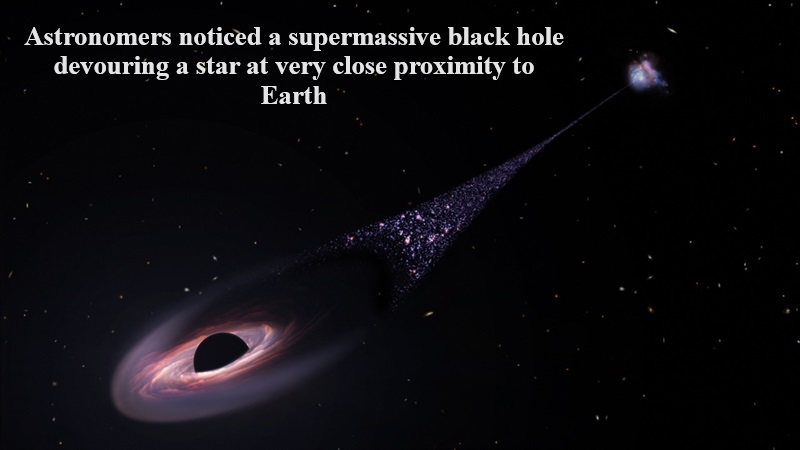
In an uncommon visual spectacle, astronomers have observed a supermassive black hole consuming a star at an exceptionally close distance to Earth.
The dramatic demise of the star occurred subsequent to its ingestion by a black hole, possessing a mass equivalent to nearly one million suns.
This event unfolded within the active star-forming galaxy NGC 3799, situated in the Leo constellation and positioned approximately 160 million light-years away from Earth.
Researchers hailing from the Hawaii Institute for Astronomy were responsible for detecting this stellar demise, classified as a tidal disruption event (TDE).
The event was identified by the sudden brightening and subsequent rapid fading of the barred spiral galaxy. The All-Sky Automated Survey for SuperNovae (ASAS-SN) system recorded the demise of the star on February 22, 2023. Research co-leader Willem Hoogendam remarked, “While instances of black holes consuming stars have been observed previously, this is the first occurrence we’ve witnessed at such proximity using visible light.”
He further stated, “This could potentially offer us significantly enhanced insights into the mechanisms governing the growth of supermassive black holes and their accretion of surrounding material.”
The discovery of a TDE in close proximity to Earth represents a rare phenomenon.
Tidal disruption events occur when stars approach supermassive black holes, which reside at the cores of large galaxies and possess masses equivalent to millions or billions of suns. The immense gravitational forces exerted by these black holes generate extensive tidal forces, causing the stars to undergo substantial stretching both horizontally and vertically.

Post Your Comments